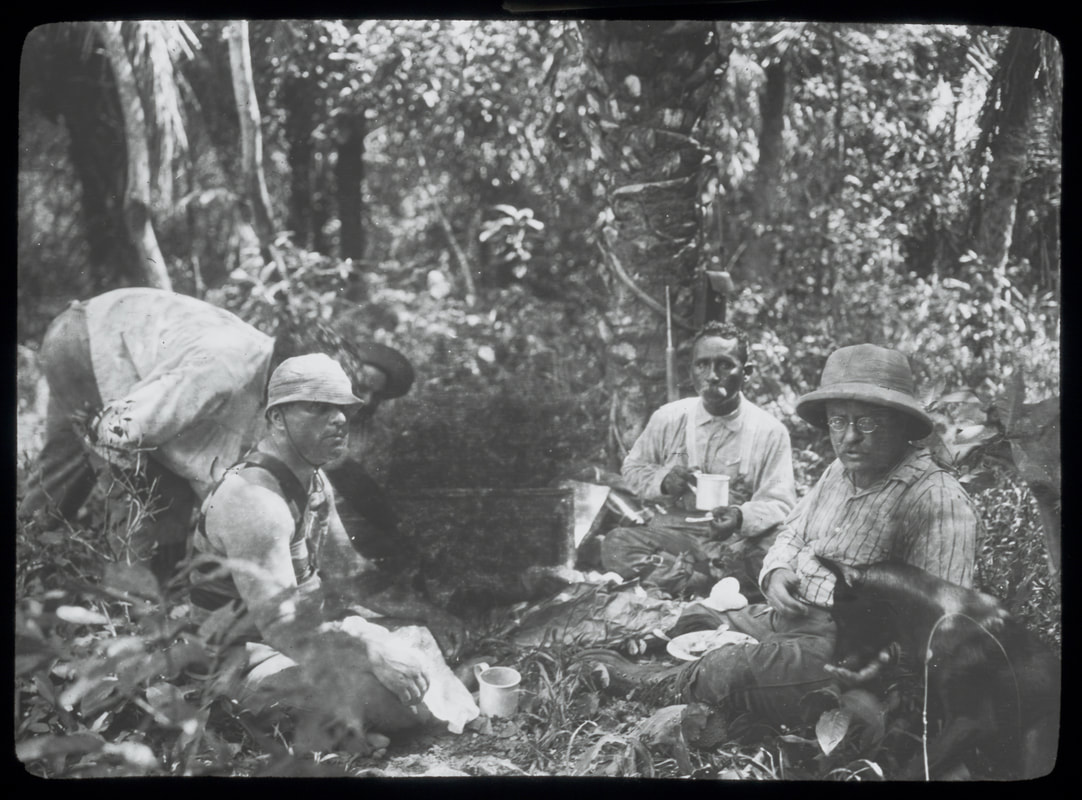|
We reached out to our festival filmmakers to ask them five questions about the experience of making their films.
Describe some of the challenges faced while making this film.
Producer and Director John Maggio: We knew from the start that we wanted to get as close as possible to the conditions that greeted Roosevelt and Rondon in 1913 and 1914. But, in order to bring the story to life we needed a big crew of extras and a rather big film crew. We learned pretty quickly that the remoteness of the River of Doubt (today Rio Roosevelt) on the far western edge of the Brazilian Amazon was going to pose real logistical problems for us and our desire to realize the experience as vividly as we wanted. But, we also knew we wanted to film in the Brazilian Amazon so we chose a tributary of the Rio Negro, the Ariau River that was geographically similar to the River of Doubt – a serpentine and swollen black river that snaked its way through the flooded forest, but was close enough to Manaus that we could ferry all of our equipment. We had a twenty-person crew that included a second unit drone team lead by cinematographer Bryan Harvey and a first unit helmed by Tim Cragg. We partnered with a Brazilian fixer who helped organize the transport of lights, generators, camera equipment, food supplies and personnel up the Rio Negro to the Ariau. We spent nearly three weeks in Brazil during the Zika outbreak and were subjected to one hundred degree temperatures and crippling humidity deluged by torrential rainstorms daily. Keeping our camera and sound equipment dry and lenses from fogging up were a constant problem. During the day our equipment floated just inches above the swollen muddy river. We often had to suspend shooting because of dangerous caimen (large powerful crocodilians) in the water or when giant pink dolphins surfaced unexpectedly. We subsisted on local fish caught from the river augmented by rice and beans. The conditions were brutal. In order to find the powerful rapids of the River of Doubt we also spent ten days in Jarabocoa, Dominican Republic. There we shot the dramatic gorge scene with a team of a dozen extras and expert climbers to lower the bulky canoes over the fifty-foot falls. In the DR we also had twenty-person crew and second unit drone team. The conditions were equally as brutal as we had a fifty-foot crane perilously dangling over very powerful waterfalls while trying to navigate class 3 rapids with a full camera crew.
Were there any surprising or meaningful experiences you want to share?
JM: We had a dozen extras, Brazilians (all native to the region, many of them descendants of indigenous people) who acted not only as extras in the film, but also our trusty guides through the rainforest and navigating the river, animal wranglers, and they hand-carved a dozen sixteen foot canoes from local trees. They provided us with traditional remedies for stomach problems, insect bites, cuts and skin infections. They could call caimans and howler monkeys, wrangle spiders and sloths and at night steered us clear of anaconda. The production itself was not unlike the Roosevelt’s fateful River of Doubt expedition as we were at the mercy of our indigenous hosts who lead us in and out of the jungle. They were incredible people and truly made this film possible. How do you approach storytelling? JM: I like stories that shine a light on intrepid people who have near fatal flaws - Alfred Kinsey, Walter Freeman(the inventor of the pre-frontal lobotomy) and Theodore Roosevelt; all of them great men whose hubris pushed the limits of reason and self-control. Roosevelt spent his youth a sickly boy who sought a mastery of nature as a way to take control of his own surroundings. He became a big game hunter, spent a year on safari in Africa, and provided museums with thousands of specimens of animals and yet he met his match on the River of Doubt in the Amazon. He had reached the outer limits of man’s mastery of the environment. He was not invincible. That desire for discovery and control on Roosevelt’s part greatly influenced my approach to this film. What impact do you hope this film will have? JM: There are so few frontiers left, let’s not forget that the Amazon is one of the last and in need of preservation and respect. We cannot control nature but we can help preserve it and hope it helps sustain us. Next for the crew of Into the Amazon:
0 Comments
Leave a Reply. |
Archives
March 2024
Categories
All
|
Contact UsJackson Wild
240 S. Glenwood, Suite 102 PO Box 3940 Jackson, WY 83001 307-200-3286 info@jacksonwild.org |


 RSS Feed
RSS Feed